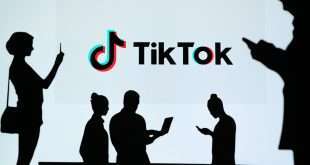In the rapidly evolving digital age, new technologies are continuously reshaping our online world. One of the most significant advancements in recent years is the emergence of Blockchain-Powered Web 3.0. This next-generation internet paradigm holds the potential to revolutionize the way we interact, transact, and access information on the web. In this comprehensive blog, we explore the fundamental concepts of Web 3.0 and how blockchain technology is spearheading this transformative shift.
The Emergence of Web 3.0: Understanding the Evolution
Web Technology Evolution: A Brief Overview
The journey of the web began with Web 1.0, characterized by static websites and limited user interactions. Web 2.0 brought social media, dynamic content, and user-generated information to the forefront. Now, Web 3.0 is poised to take the reins, promising a more decentralized, secure, and user-centric internet experience.
What is Web 3.0?
Web 3.0 refers to the next generation of the internet, where data ownership, privacy, and security are paramount. Unlike its predecessors, Web 3.0 leverages cutting-edge technologies like blockchain, artificial intelligence, and decentralized networks to create a more democratized digital ecosystem.
The Role of Blockchain in Web 3.0
Blockchain technology serves as the foundation of Web 3.0, offering a transparent and tamper-proof ledger for data storage and transactions. Its decentralized nature eliminates the need for intermediaries, reducing costs, enhancing security, and empowering users with full control over their data.
Advancing Web Technologies Enabling Web 3.0
Decentralization and Distributed Networks
Web 3.0 embraces the concept of decentralization, where data is stored across multiple nodes instead of centralized servers. This distributed architecture ensures enhanced resilience and censorship resistance.
Smart Contracts: Automating Transactions
Smart contracts, powered by blockchain, are self-executing agreements with predefined rules. They enable secure, automated transactions without the need for intermediaries, reducing transaction costs and ensuring transparency.
Interoperability: Seamless Data Exchange
Web 3.0 aims to create a seamless data exchange between different platforms and applications. With blockchain as the backbone, interoperability becomes more achievable, leading to a more integrated digital experience.
Enhanced Privacy and Security
Blockchain’s cryptographic principles provide a robust layer of security, safeguarding sensitive information from unauthorized access. This heightened security ensures user data remains confidential and secure.
Web Computing and the Power of Decentralized Applications (DApps)
Understanding Web Computing
Web computing is a paradigm shift in web development technologies. It involves decentralized applications (DApps) that run on a distributed network of computers, rather than relying on central servers. This architecture empowers users with control and ownership over their data.
The Rise of DApps
DApps are at the forefront of Web 3.0, offering a myriad of services across various industries. They enable direct peer-to-peer interactions, reducing middlemen and fostering trust within the ecosystem.
DApps vs. Traditional Apps
Unlike traditional apps, DApps operate on decentralized networks and do not require users to entrust their data to a central authority. This ensures data integrity and prevents potential data breaches.
The Role of Web Hosting and Cloud in Web 3.0
Decentralized Web Hosting
With the advent of Web 3.0, traditional web hosting models face disruption. Decentralized web hosting utilizes distributed networks, enabling websites to be hosted across multiple nodes, reducing the risk of server failures and downtimes.
The Cloud in Web 3.0
Web 3.0 leverages cloud computing in innovative ways. Decentralized cloud platforms powered by blockchain offer enhanced security, scalability, and affordability, making data storage and access more efficient and secure.
Final Words
Web 3.0, powered by blockchain technology and decentralized principles, marks a revolutionary shift in the internet landscape. It introduces a new era of data ownership, privacy, and security, empowering users with greater control over their online experiences. As we embrace this transformative wave, Web 3.0 promises to redefine the way we interact and conduct business in the digital realm.
Commonly Asked Questions
Q1: How does Web 3.0 impact data privacy?
A1: Web 3.0, with its decentralized architecture and blockchain-based security, provides users with enhanced data privacy. Personal information is no longer concentrated in central servers but distributed across multiple nodes, reducing the risk of data breaches and unauthorized access.
Q2: What makes DApps more secure than traditional apps?
A2: DApps run on decentralized networks, eliminating the need for a central authority to store user data. This reduces the risk of data manipulation and hacking, making DApps inherently more secure and trustworthy.
Q3: How does blockchain enable peer-to-peer transactions in Web 3.0?
A3: Blockchain’s smart contracts facilitate direct peer-to-peer transactions between users without the need for intermediaries. These automated agreements execute when predefined conditions are met, ensuring transparent and secure transactions.
Q4: Can blockchain improve the scalability of web hosting?
A4: Yes, decentralized web hosting powered by blockchain can significantly enhance scalability. By distributing website data across multiple nodes, it reduces the strain on individual servers and ensures a smoother and more scalable hosting experience.
Q5: What industries will benefit the most from Web 3.0?
A5: Various industries, including finance, supply chain management, healthcare, and entertainment, stand to benefit from Web 3.0’s enhanced security, transparency, and efficiency. The decentralized nature of Web 3.0 opens up new possibilities for innovation and disruption in these sectors.
 webfily
webfily



